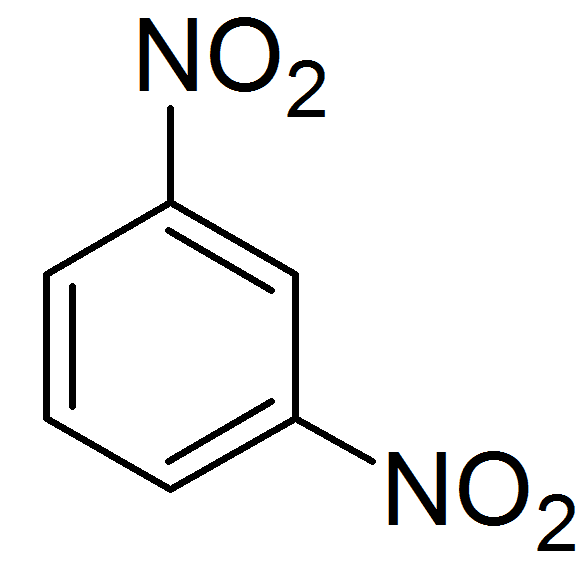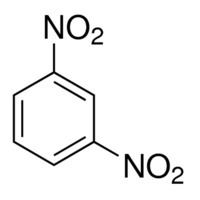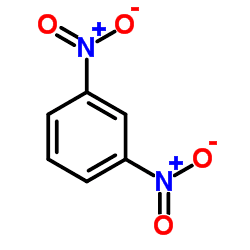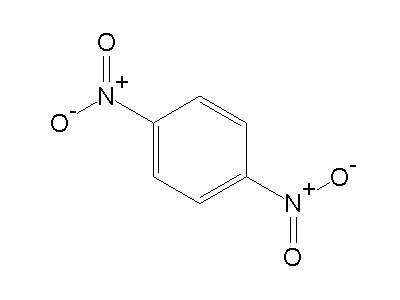Formula C6H4N2O4 | ||
 | ||
Dinitrobenzenes are chemical compounds composed of a benzene ring and two nitro group (-NO2) substituents. The three possible arrangements of the nitro groups afford three isomers, 1,2-dinitrobenzene, 1,3-dinitrobenzene, and 1,4-dinitrobenzene. Each isomer has the chemical formula C6H4N2O4 and a molar mass of about 168.11 g/mol. 1,3-Dinitrobenzene is the most common isomer and it is used in the manufacture of explosives.
Contents

Properties

The dinitrobenzenes are all crystalline solids. The boiling points of the three isomers are relatively close; however, the melting points significantly differ. 1,4-Dinitrobenzene, which has the highest symmetry, has the highest melting point.
Preparation

1,3-Dinitrobenzene is accessible by nitration of nitrobenzene. The reaction proceeds under acid catalysis using sulfuric acid. The directing effect of the nitro group of nitrobenzene leads to 93% of the product resulting from nitration at the meta-position. The ortho- and para-products occur in only 6% and 1%, respectively.
Reactions

Reduction of 1,3-dinitrobenzene with sodium sulfide in aqueous solution leads to 3-nitroaniline. Further reduction with iron and hydrochloric acid (HCl) gives m-phenylenediamine.

